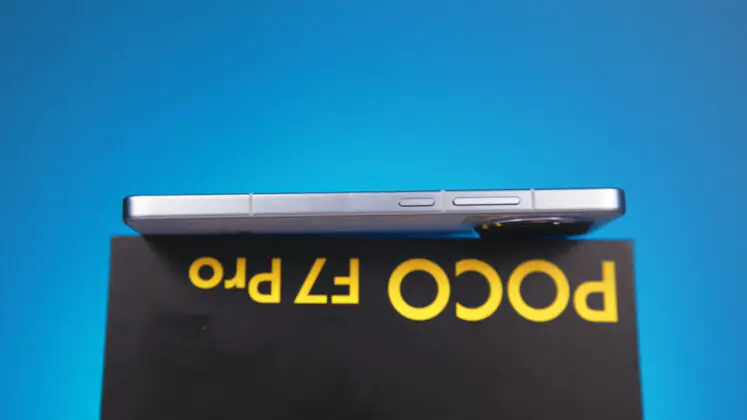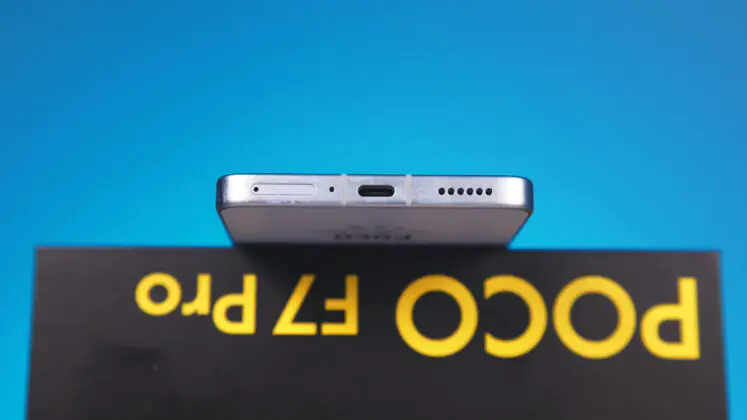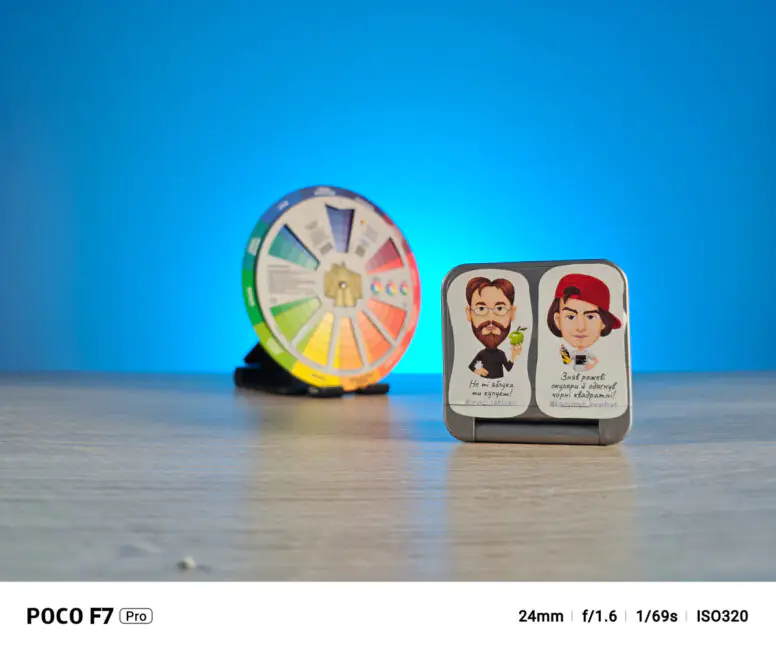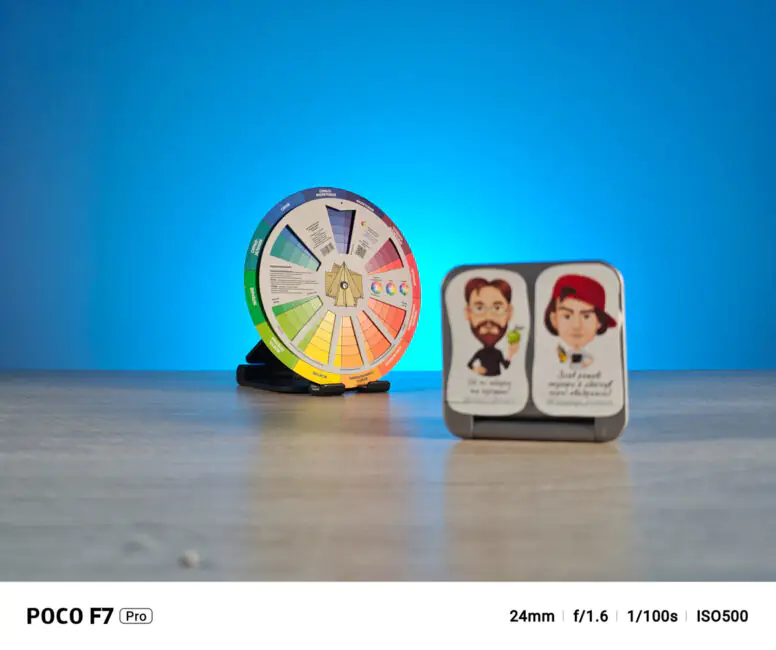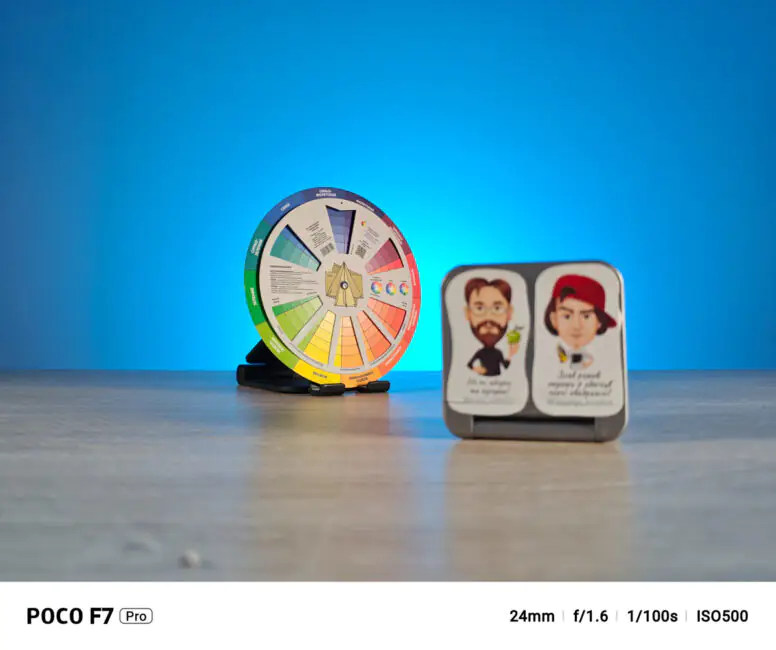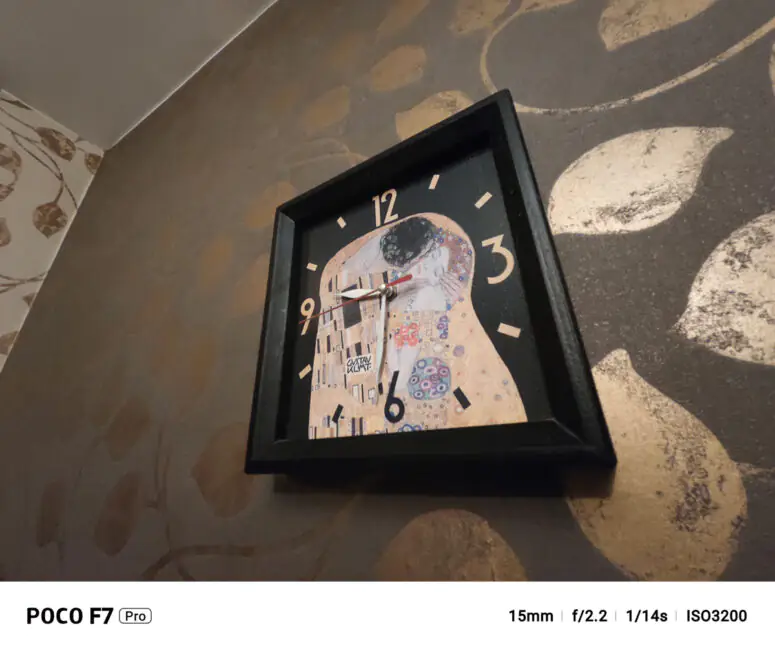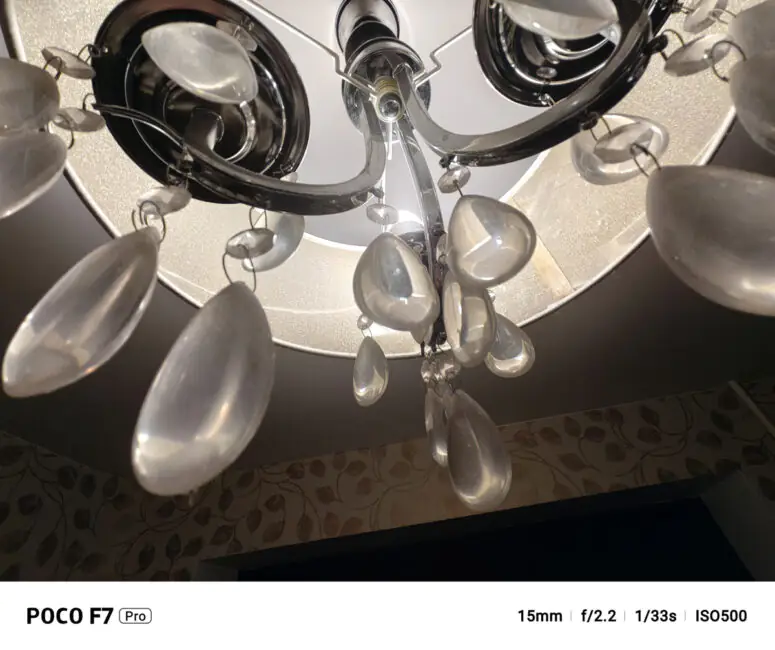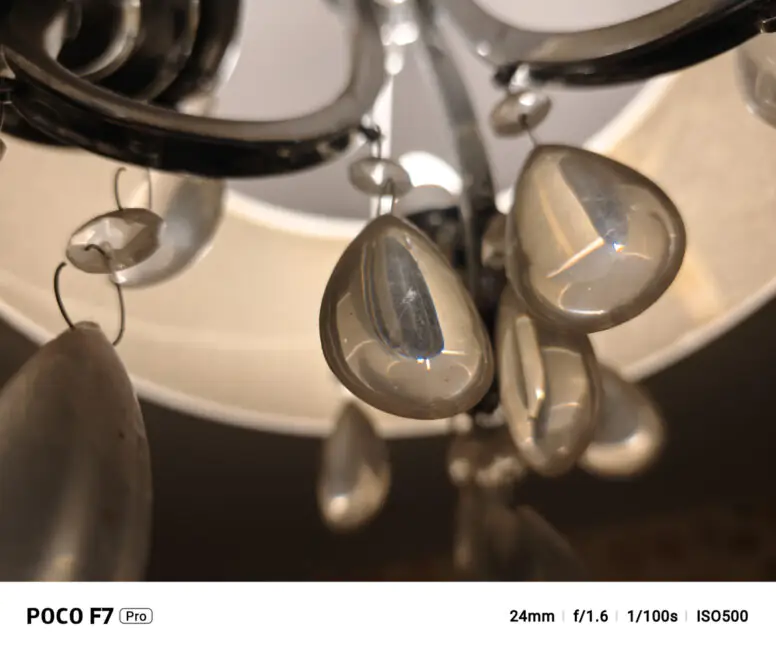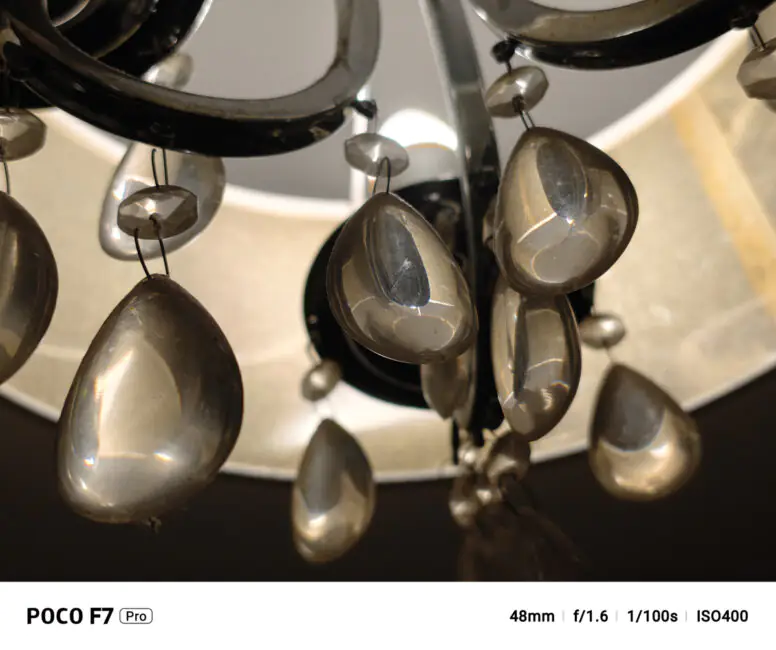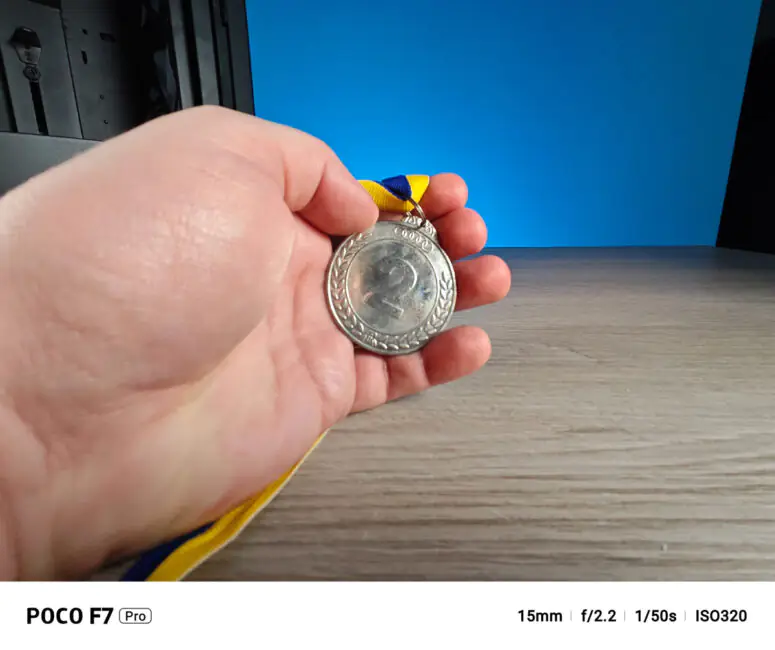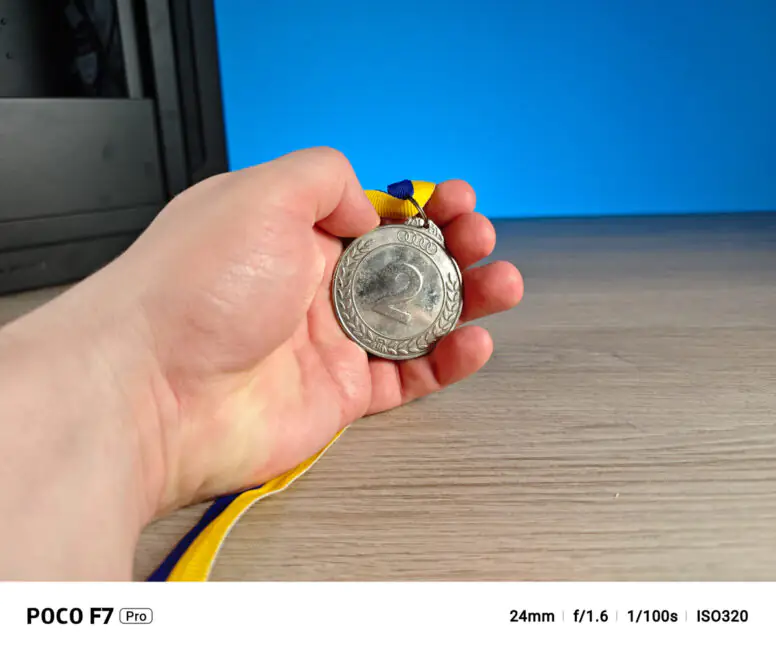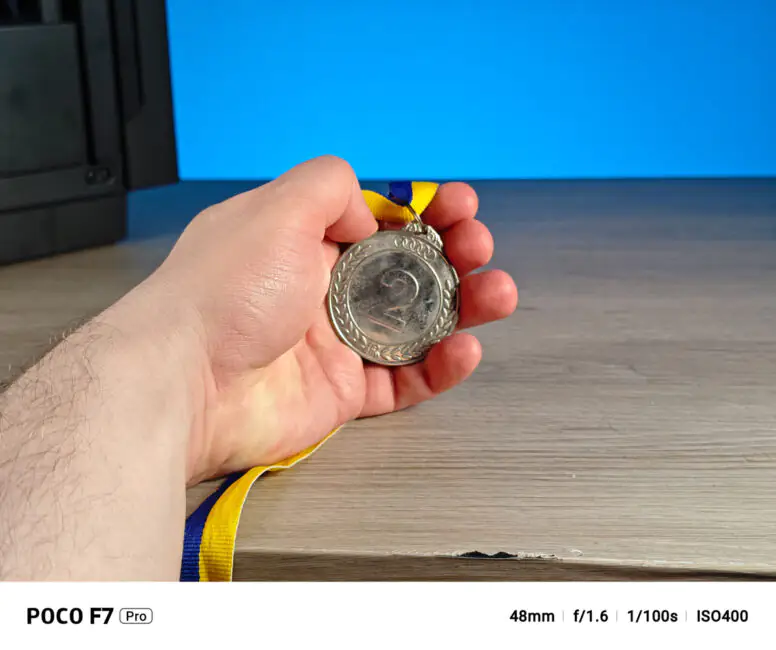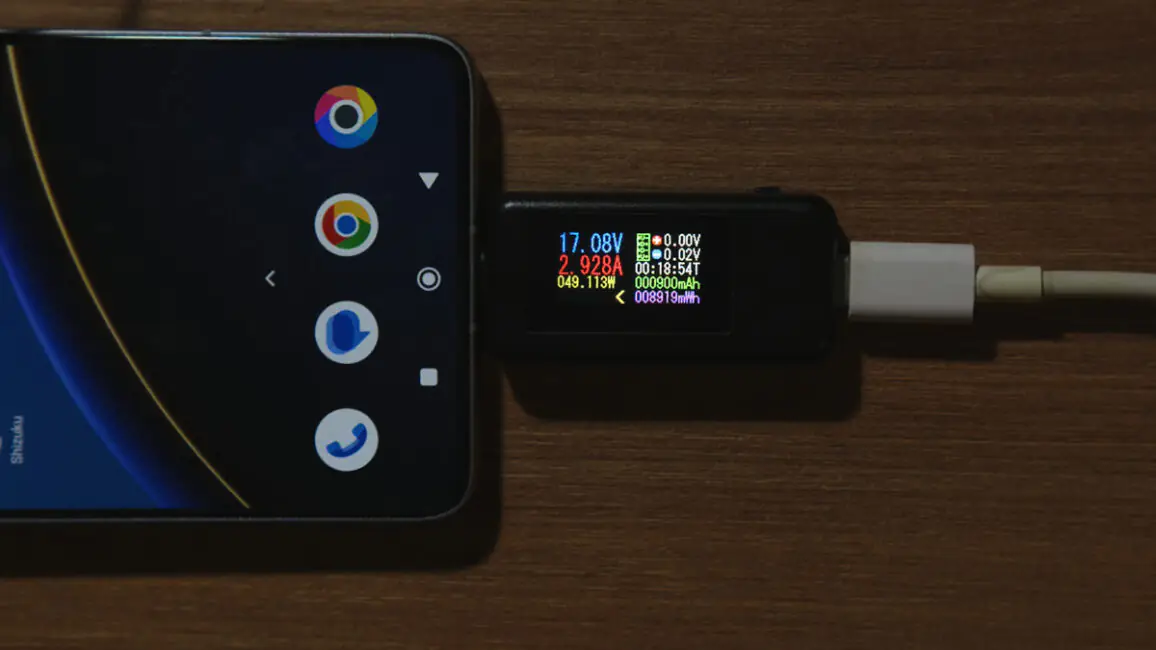© ROOT-NATION.com - Use of content is permitted with a backlink.
The title of “flagship killer” is a coveted niche in the smartphone market. Put simply, it’s a kind of shortcut for users who want top-tier performance without paying full flagship prices—though this often comes at the expense of compromises in other areas. Since OnePlus gradually moved away from this identity and became just another maker of capable, but somewhat uninspired devices, a new name has stepped in to fill the gap: Poco. And the latest Poco F7 Pro is a strong example of why that label now fits.
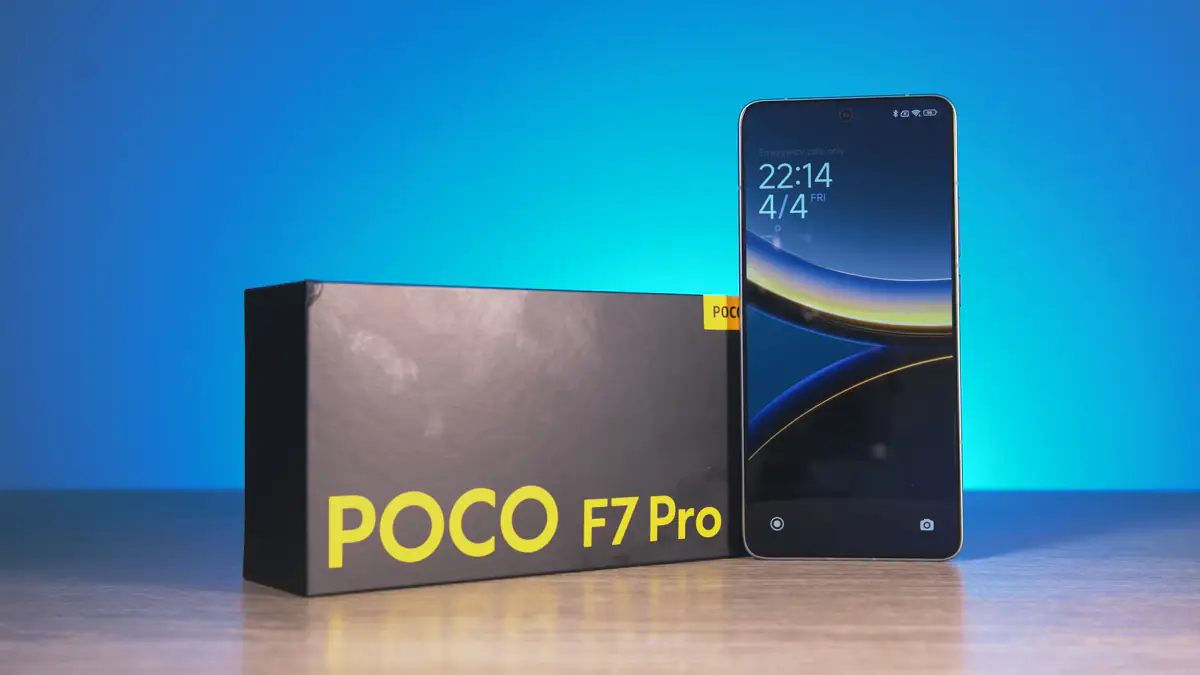
Specifications
- Dimensions: 160.26 × 74.95 × 8.39 mm
- Weight: 212 g
- Housing protection: IP68
- Screen protection: Gorilla Glass 7i
- Screen diagonal: 6.67 inches
- Panel: TCL CSOT M9 12 bit
- Dolby Vision support: yes
- DCI-P3 coverage: 100%
- Resolution: QHD/FHD+
- Maximum PPI: 526
- Refresh rate: 120 HzPWM: 3840 Hz
- Response rate: 480 Hz/256 Hz (Game Turbo mode)
- Body-to-screen ratio: 93.69%
- Maximum promised brightness: 1800 No
- Always on Display support: yes
- SoC: Qualcomm Snapdragon 8 Gen 3
- RAM: 12 GB LPDDR5X
- Permanent storage: 256/512 GB UFS 4.1
- Data Transfer: Wi-Fi 7, Bluetooth 5.4, NFC
- Sound: stereo, Dolby Audio
- UWB (Ultra Wide Band)/eSIM support: no
- Camera: 50 + 8 + 20 megapixels
- Shell: HyperOS 2.0 based on Android 15
- Battery capacity: 6000 mAh
- Maximum charging speed: 90 W
Video review of Poco F7 Pro

Market positioning
Before we dive in—yes, the Poco F7 Pro is essentially a partial rebranding of the China-exclusive Redmi K80. “Partial” because the Poco version features a larger battery, making it technically a different device, even if the core specs remain largely the same.

It’s also important not to mistake the Poco F7 Pro for a budget device. It comfortably sits in the upper mid-range category, with a price tag of $550 or €500 for the 12GB RAM / 256GB storage version. That said, I wouldn’t recommend this base variant. Why? Because for just $50 more—$600 or €560—you can get the 12GB / 512GB model. In the world of budget smartphones, that kind of price jump might be significant, but in the mid-range segment, it’s a difference worth paying for.
There’s also a higher-end Poco F7 Ultra variant, running on the Snapdragon 8 Gen 3 (branded as “Elite”), though it comes in at a much steeper $800 without discounts. As for color options, the Poco F7 Pro is available in matte black, a blue that actually looks more grey or metallic in tone, and a silver version that leans more towards plain grey.
Package contents
The manufacturer clearly understands its target audience. The Poco F7 Pro comes with a protective case in the box, along with a branded Type-A to Type-C charging cable. There’s also a factory-applied screen protector — a setup that hits a nice balance: nothing excessive, but nothing important left out either.
What’s missing, though — and something I personally don’t appreciate — is the charging brick. Just like with the Redmi Note 14 Pro, Poco has decided to exclude the power adapter from the box.

Design
The Poco F7 Pro features a unique two-tone design. The lower portion of the back has a matte finish, while the upper section introduces a bit of gloss, paired with a mix of geometric shapes that give the device a distinctive aesthetic. The sides are flat and matte, contributing to a clean and modern look. The camera module is asymmetrical and noticeably large. Interestingly, while the previous generation had a third auxiliary lens, the F7 Pro only includes two main cameras. However, the housing still maintains the visual impression of a triple-lens setup, which might be slightly misleading at first glance.
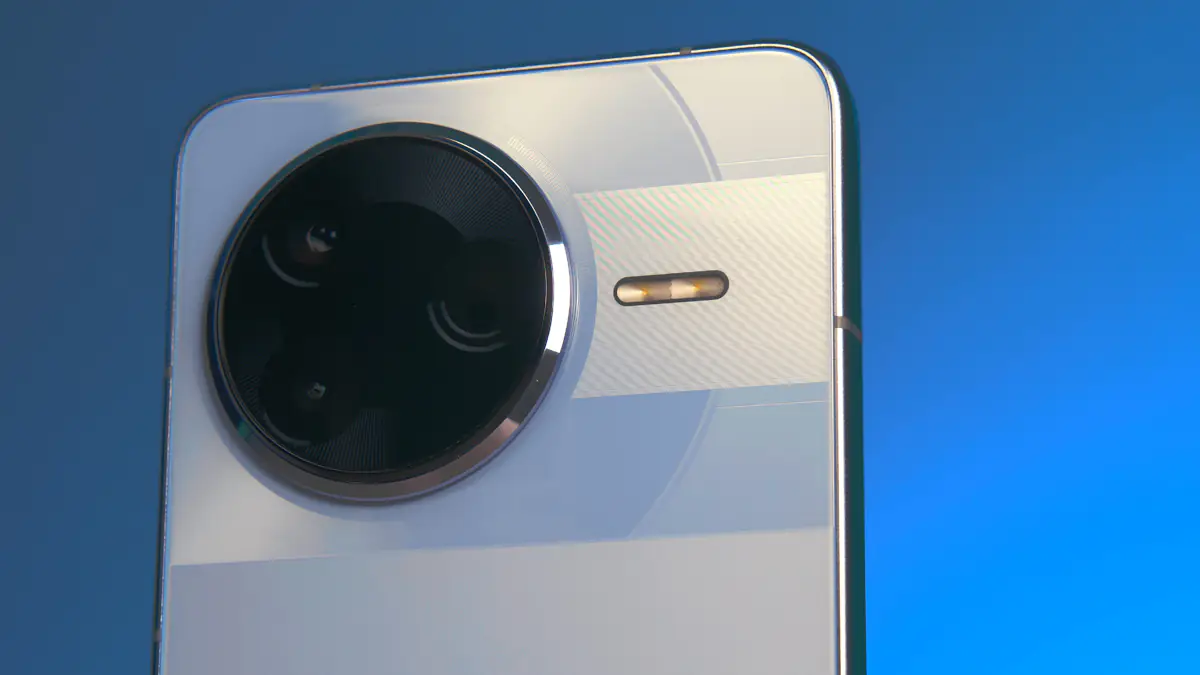
Overall, despite the glossy accents and the “dummy” camera cutout, I genuinely like the design. It stands out in areas where it doesn’t necessarily need to—and I respect that kind of extra effort.
Ergonomics are solid too. Both the volume rocker and power button are placed on the same side, making one-handed use more convenient. On the bottom, you’ll find the speaker, USB Type-C port, and SIM tray. What really caught me off guard is the completely clean top edge—there’s nothing there at all. Still, the phone does feature stereo sound, with the second speaker embedded above the front-facing camera, which is small and subtly integrated.
In general, the expressive geometric shape of the camera gives the Poco F7 Pro body an almost brutalistic flavour. Which is in stark contrast to the flat silver frame around the display. In fact, I twice confused Poco F7 Pro with the Oppo Reno13 5G review sample, because both devices are equally elegant in full face. And I remind you that Reno13 is considered a designer device, as you can see below. By the way, we already have a review, so here’s the link.
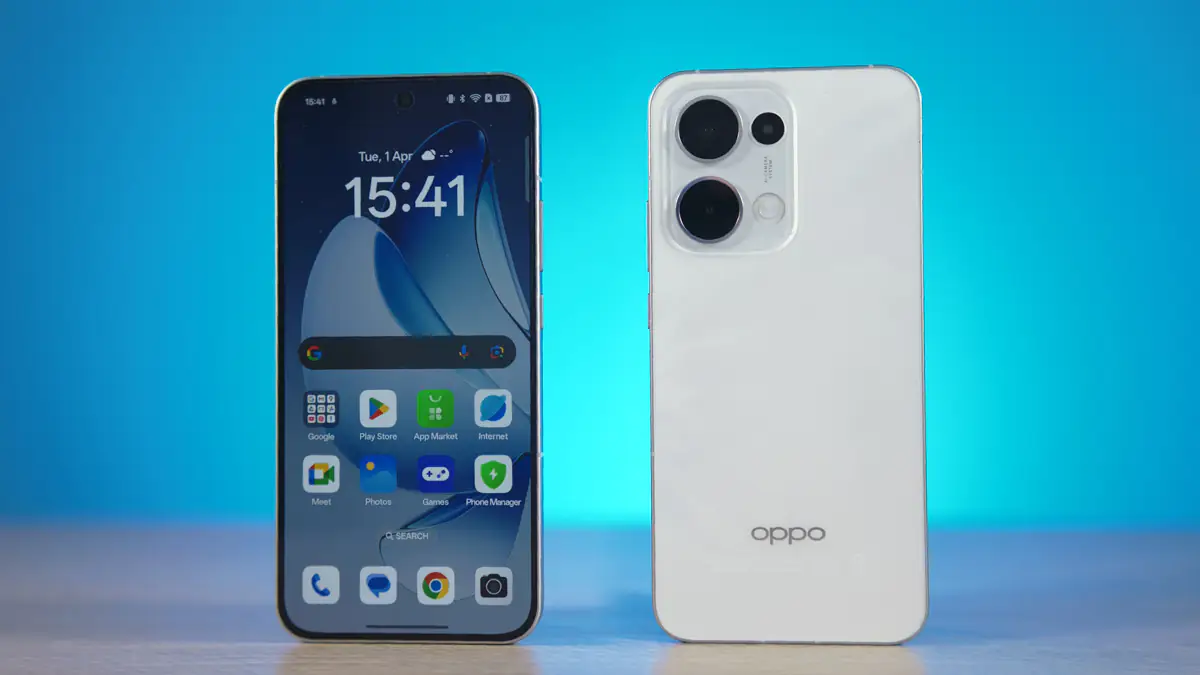
Among the notable upgrades in the Poco F7 Pro are the inclusion of Gorilla Glass 7i and IP68-rated water and dust resistance. This is a solid improvement over the previous model, which only offered IP54 protection. It’s a welcome step forward for durability in this price segment. The SIM tray supports two cards, but there’s no option for microSD expansion. As for dimensions, the phone measures 160.26×74.95×8.39 mm and weighs 212 grams.
Display
The Poco F7 Pro comes equipped with a display that performs well across the board. It features a 6.67-inch OLED panel with a native resolution of 3200×1440 (QHD), which delivers a pixel density of 526 PPI—plenty sharp for detailed visuals and crisp text. By default, though, the phone runs at FHD+ (2400×1080) to save on power. The screen supports a 120 Hz refresh rate, making animations and scrolling feel smooth. It also uses high-frequency PWM dimming at 3840 Hz, which should help reduce eye strain during prolonged use, particularly in low-light environments.

The display panel on the Poco F7 Pro appears to be the same as on the Poco F7 Ultra, featuring a TCL CSOT M9 panel. It’s a 12-bit display with support for Dolby Vision and covers the full DCI-P3 color gamut, offering all the necessary HDR formats. The touch response rate is 480 Hz consistently, and up to 2560 Hz in Game Turbo mode.
The screen-to-body ratio is a solid 93.69%. The claimed peak brightness is 1800 nits, but in real-world use, you can expect around 1500 nits, which is still impressively bright—though not groundbreaking. It’s worth noting that these 1500 nits were only achieved in auto-brightness mode.
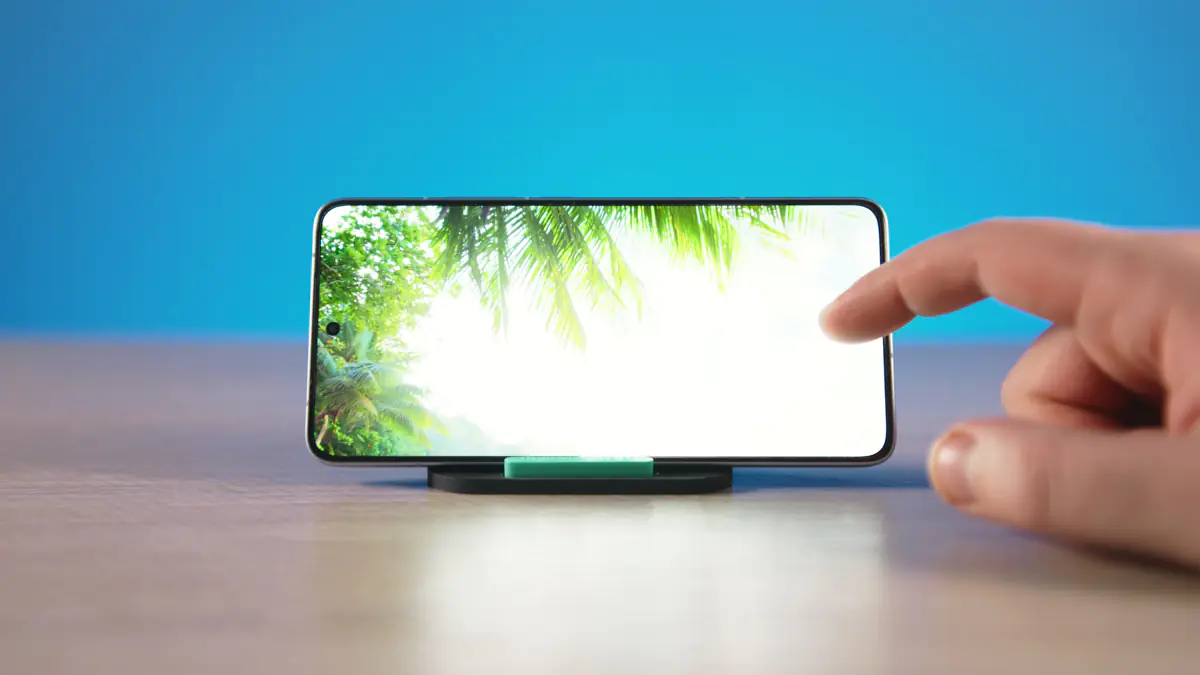
Without the Sunlight Mode switch enabled, the maximum brightness is limited to 500 nits, which isn’t a bad thing—anything brighter can start to strain the eyes. On the downside, the panel is not LTPO, so don’t expect power-saving benefits from dynamically lowering the refresh rate. More specifically, the refresh rate drops to 60 Hz, but there’s no support for the 1-2 Hz variations found in some Samsung models. The good news is that the panel isn’t LTPS either, which means it does support Always On Display.
Performance
In terms of performance, the new device lives up to its “flagship killer” title. It’s one of the most affordable smartphones to feature the Qualcomm Snapdragon 8 Gen 3. This isn’t just the 8s version, but the full Gen 3, delivering a performance score of 2 million points in AnTuTu V10.
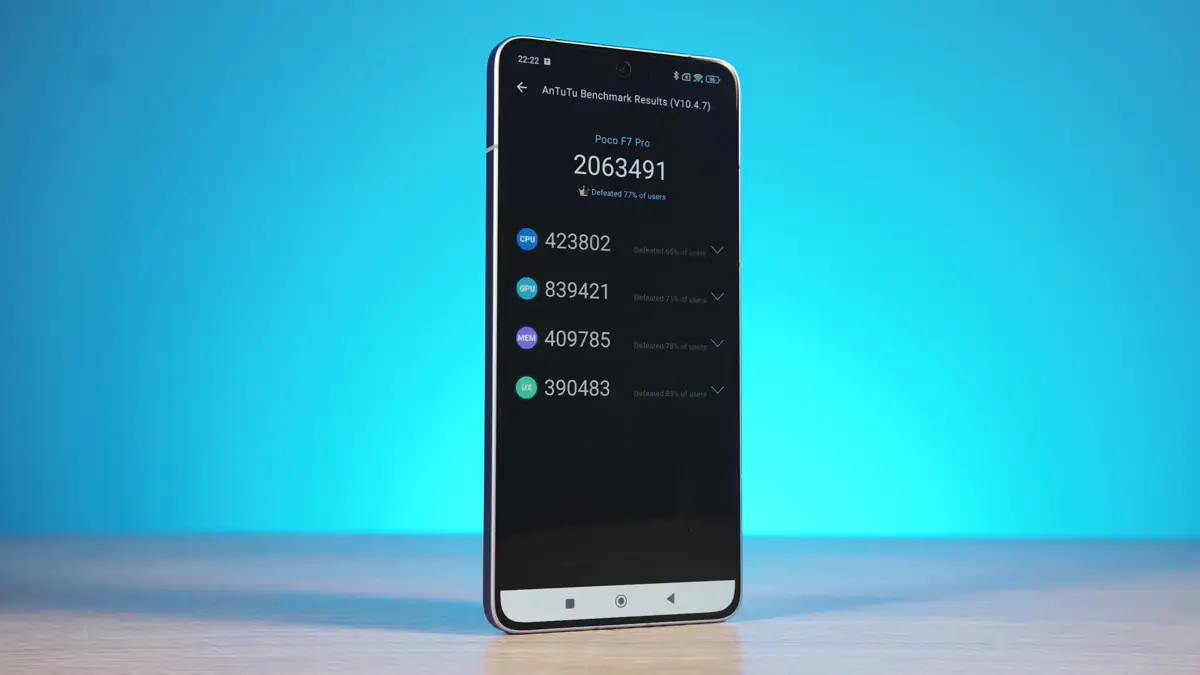
The device is powered by an octa-core setup, including four cores running at over 3 GHz: one Cortex-X4 and three Cortex-A720. Additionally, there are four Cortex-A720 cores with a clock speed close to 3 GHz, and two more energy-efficient Cortex-A520 cores running at 2.27 GHz. It has 12 MB of L3 cache and is built on TSMC’s 4nm process. The sustained power draw is up to 8W. For graphics, the SoC features the Adreno 750 GPU, capable of reaching clock speeds up to 1000 MHz.
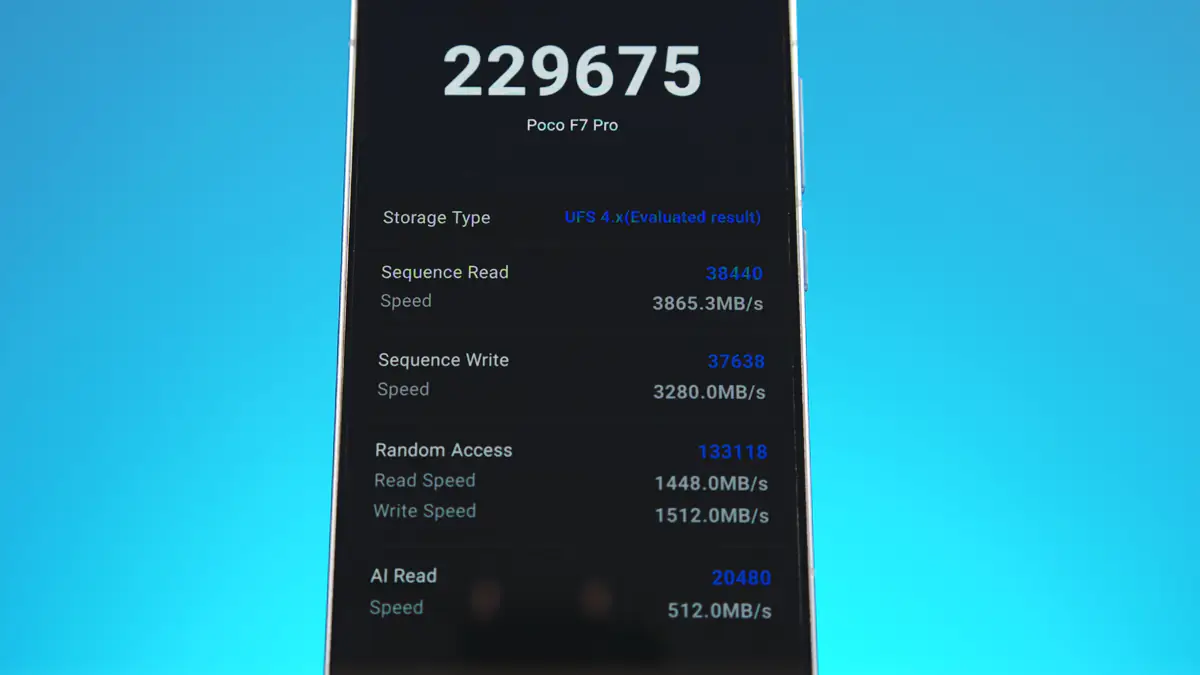
The Poco F7 Pro comes with LPDDR5X RAM, running at 4800 MHz, offering a four-channel configuration for fast performance. The internal storage is UFS 4.1, capable of theoretical peak speeds of nearly 4 GB/s. For context, this is faster than PCIe 3.0 found in desktop PCs.
Data transfer and media capabilities
The Poco F7 Pro offers some surprises in terms of data transfer capabilities. Thanks to the new SoC, it supports Wi-Fi 7, Bluetooth 5.4, and NFC. A particularly unexpected feature for me was the inclusion of an infrared (IR) port. Typically, these are positioned at the top edge of the device, but in the case of the Poco F7 Pro, the emitter is integrated into the fake camera module. This turned out to be more convenient since, unlike with a remote control, you typically use the smartphone in a vertical orientation. In a horizontal position, the tactile experience is lost.
The antennas here are 4×4 MIMO, there is support for SBC / AAC / AptX / AptX HD / AptX Adaptive / LDAC / LHDC 5.0 / LC3 / ASHA / Auracast codecs. The bad news is that the smartphone does NOT support eSIM and Ultra Wide Band. The microphones in Poco F7 Pro are located in 3 positions and obviously support noise cancellation. The sound is stereo, with Dolby Audio support. Sound tests will be in the video review above.
Cameras
The Poco F7 Pro is equipped with a dual primary camera setup, as I mentioned earlier, with the third module being the IR port. The main module is a 50-megapixel Light Fusion 800 sensor with an F/1.6 aperture and pixel size of 2 µm, supporting 4-in-1 pixel binning. The sensor size is 1/1.55″, and the lens is composed of six elements, including optical image stabilization. The field of view is 24mm. The ultrawide module is an 8-megapixel OmniVision OV08D with an F/2.2 aperture, a 1.12 µm pixel size, and no autofocus. The field of view is 15mm. The front camera is a 20-megapixel OmniVision OV20B, with an F/2.2 aperture, 0.7 µm pixel size, no autofocus, and a 21mm field of view.
Overall, the camera experience on the Poco F7 Pro is somewhat underwhelming. It’s clear that the camera system has limitations. The fixed focus on the front-facing camera can be understood, but the same limitation on the ultrawide module is harder to justify. This significantly limits its versatility, preventing it from being used as a makeshift macro lens, for instance. Additionally, neither the ultrawide nor the front camera supports video recording at even 4K 24 FPS, with 1080p at 60 FPS being the maximum. Image quality is generally satisfactory across the board, but the lack of versatility stands out as a notable drawback.
So, the main 50-megapixel sensor bears the brunt of the camera performance. Does it handle the load? Mostly yes, rather than no. It supports 8K video at 24 FPS and 4K at 60 FPS, and the aperture is wide enough to produce quality natural bokeh. Additionally, it offers a variety of shooting modes, including AI-enhanced options, which help improve results in certain situations.
PHOTOS AND VIDEOS IN FULL SIZE HERE
I also specifically tested the 8K video capabilities. The last time I tested this, it was on the OnePlus 9 Pro, where the dynamic range was about 2-3 stops lower. The Poco F7 Pro avoids this issue, even without switching to the H.265 format. Yes, 8K recording comes with a crop and results in a darker image, but text, for example, becomes more readable when zooming in. Is this a major advantage, given the format’s limitations? That’s for you to decide. Personally, I’m just happy that the 8K footage doesn’t degrade.
Software
The Poco F7 Pro comes with the HyperOS 2.0 interface out of the box, based on Android 15. I had the chance to compare this interface with HyperOS 1.0 since I chose not to update my Redmi Note 13 Pro+ 5G to Android 15.
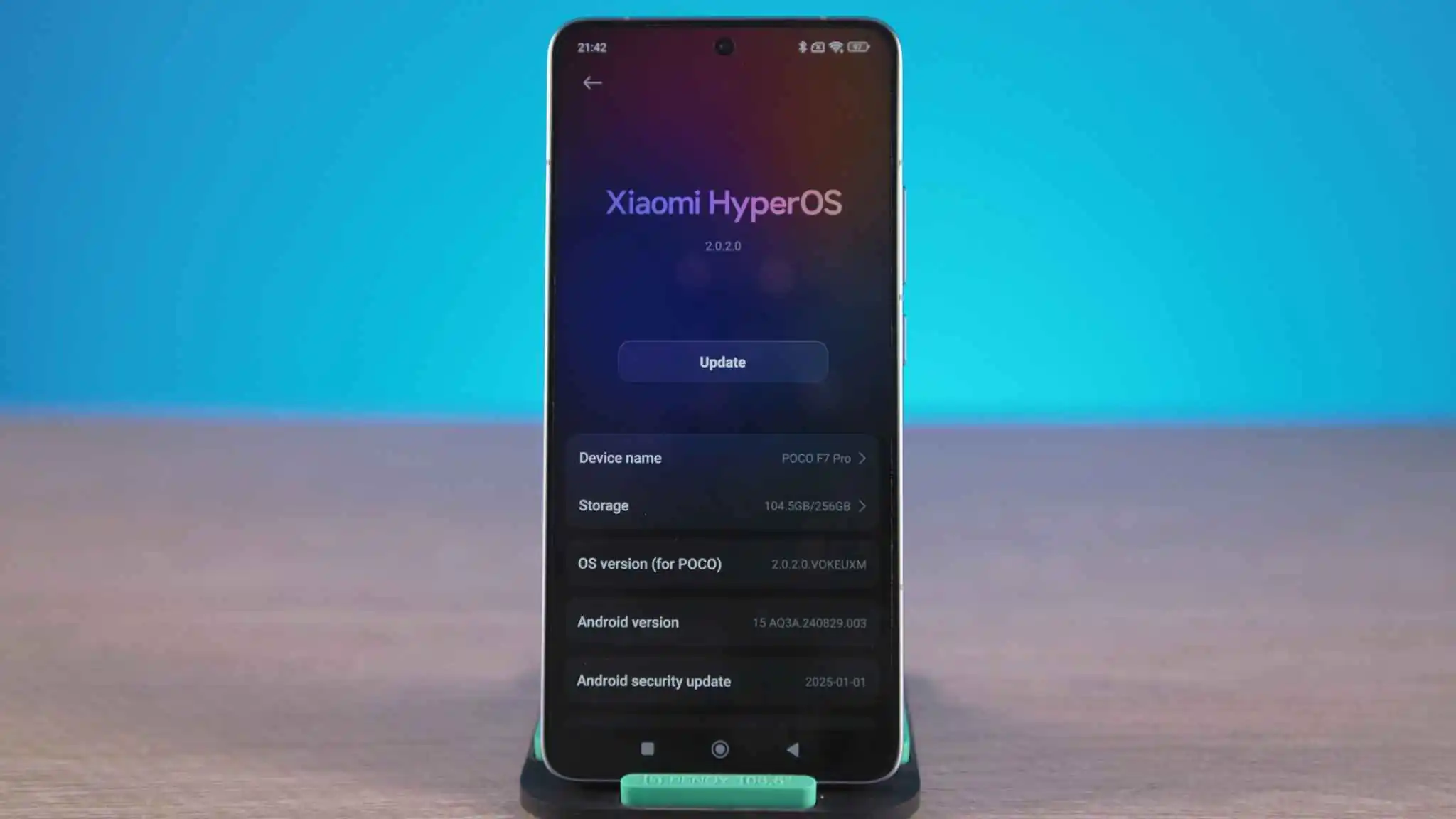
Bad news: if you’re using HyperOS 1.0 and expecting the update to bring a real selection of interface features and eliminate unnecessary animation delays… I have to disappoint you. Also, for the first time since using HyperOS, I noticed a bug on the F7 Pro where a swipe-up gesture would constantly open the App Vault. Even restarting the device didn’t fix the issue. The problem was solved by removing the app updates.

Good news: if you’re a fan of HyperOS 1.0, the new model is definitely an improvement. All the popular features are still present, but the animations that worked well have been enhanced. This, I should note, is a bonus from Android 15, as ColorOS 15, which is Oppo’s proprietary interface, has nearly identical animations.
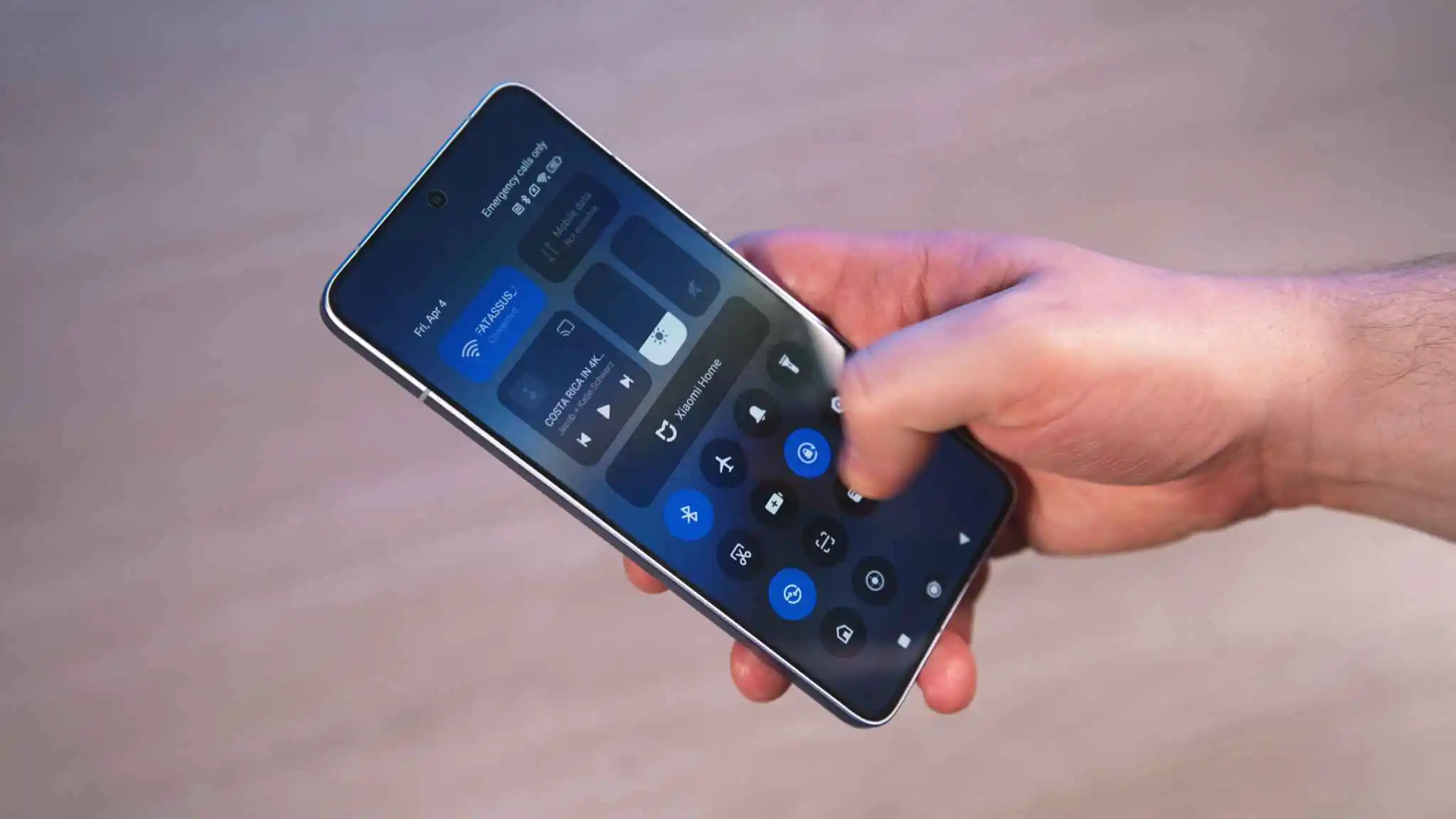
HyperOS 2.0 also introduces a revamped menu for device interaction within the Xiaomi ecosystem, a new desktop layout, and a range of AI features. These include voice recognition, app performance optimization, automatic subtitles, and AI-powered enhancements in the gallery, among others.
Battery life
I’ll start with the battery capacity. It’s a 6000 mAh lithium-polymer battery. Honestly, I can’t remember the last time I saw a battery of this capacity in a device of this class. Clearly, the battery life on the Poco F7 Pro is exceptional. It lasted 18 hours in the PCMark Battery 3.0 test at half brightness—almost a recent record.
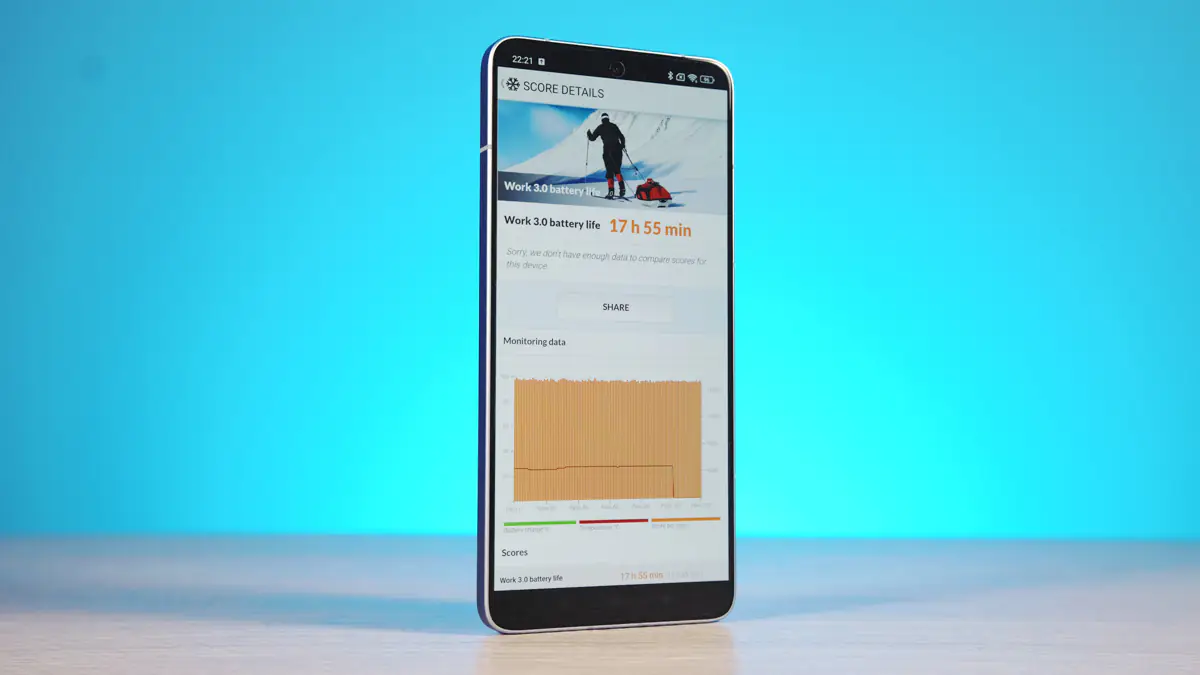
However, since the Poco F7 Pro doesn’t come with a charger in the box, I can’t evaluate the standard charging speed, as it simply doesn’t exist. The two charging tests I personally conducted were with a proprietary 120-watt charger from the Redmi Note 13 Pro+ 5G and a charger from the Motorola Edge 50 Ultra, using a non-proprietary Type-C to Type-C cable. By the way, reviews for both of these smartphones are already available on our site.
And, surprisingly, the Motorola charger provided up to 65W briefly, while the Xiaomi charger only delivered 55W and no more. Overall, the charging speeds are as follows:
- Start – 10%
- 2 min – 20%
- 5 min – 30%
- 13 min – 50%
- 22 min – 70%
- 31 min – 90%
- 38 min – 99%
The bad, albeit obvious news is that there is no wireless charging.
Conclusions
This smartphone can truly be considered a flagship killer. It’s super powerful, features an excellent display with no flaws (in fact, it’s the same one found in a flagship that costs almost 50% more). There are no compromises in terms of build protection, the battery life is record-breaking for recent times, and the charging speed is on point.
Where does the Poco F7 Pro fall short? The base model has insufficient memory, there’s no charger included in the box, and the cameras, while good, are somewhat limited for their price. Overall, the Poco F7 Pro stands strong in its right to be part of the Pocophone flagship killer lineup and deserves my recommendation.
Read also:
- Redmi Note 13 Pro+ 5G Review: True Flagship
- Motorola Edge 50 Ultra Review: Again the Top? Yes, Again!
- Redmi Note 14 Pro Smartphone Review




